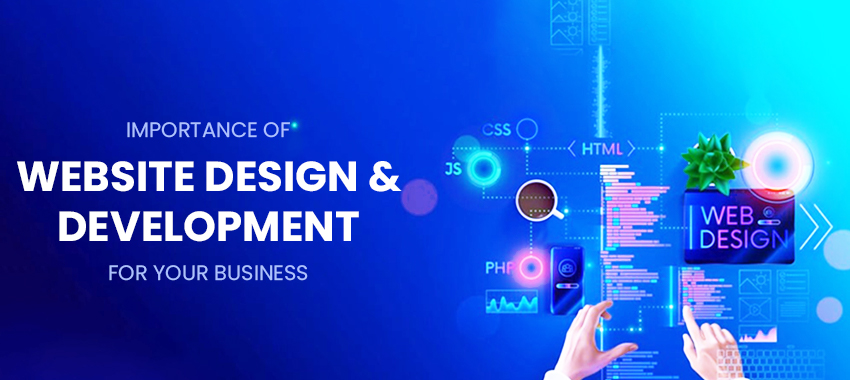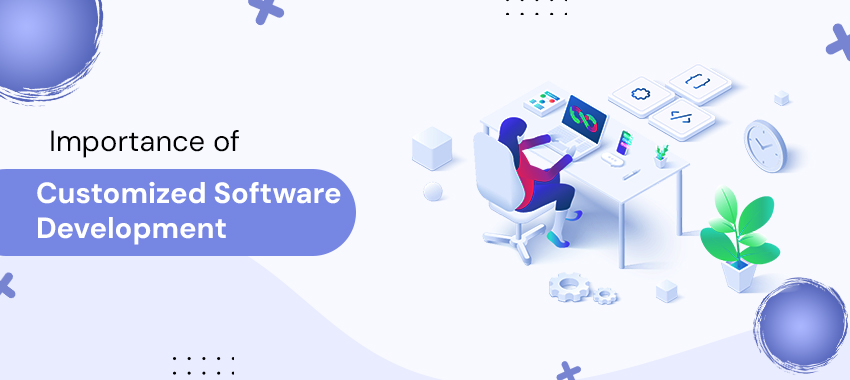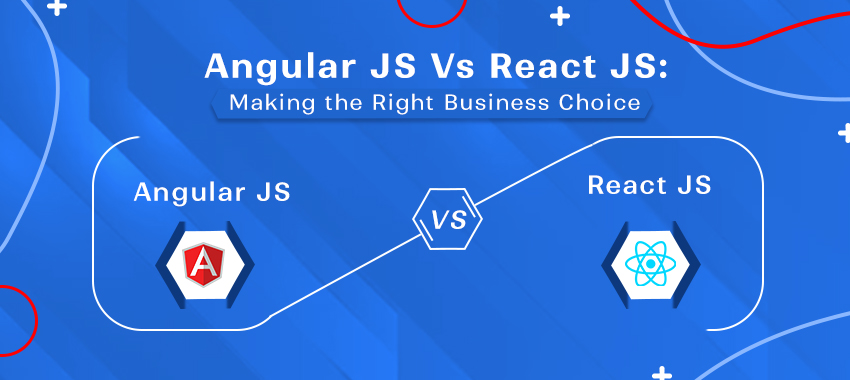
Why Website Design & Development Is Important For your Business
In today's digital era, it's important for businesses to establish a strong online presence. A well-crafted website serves as the foundation of your online identity, allowing you to engage with customers, showcase your products or services, and establish credibility. In this blog, we'll explore why website design and development are key to achieving business success. We'll discover how it helps you make a lasting impact and drive conversions. So, let's dive in and uncover the undeniable advantages of investing in professional website design and development.
What’s the Importance of website?
Having a comprehensive understanding of the benefits and advantages of websites is crucial for making the important step of having your own website.
In today's digital world, we are becoming more and more active on the internet, and websites enable us to do most of our online activities, such as online learning, watching videos, playing games, and paying bills. Websites have become an integral part of our everyday lives, allowing us to access information, socialize, and even do banking transactions in real-time.
With websites, we can easily get to know people or businesses, learn about distant locations, and create our profiles and resumes, and so much more. By taking a look at our everyday activities, we can see the significant impact of websites on our lives.

Type of Websites Design & Development
There are various types of websites that can be designed and developed based on their purpose, functionality and target audience. Here are some common types:
- E-commerce Websites
E-commerce websites are designed for online businesses that sell products or services. They include features like shopping cards, secure pament, gateways, product catalogs and order management systems.
- Blogging Websites
Blogging platforms are designed for individuals or organizations to publish and share articles or blog posts. They typically have features like categories, tags, comments and archives to organize and engage with readers.
- Corporate Websites
Corporate websites are used by businesses to establish their online presence, provide information about their products or services and communicate their brand identity. They often include sections like about us, services, teams and contact information.
- Educational Websites
Educational websites cater to online learning and provide resources, courses, and interactive content for students and learners. They can be used by schools, universities, e-learning platforms, or individual educators.
- News and Magazine Websites
News and magazine websites deliver up-to-date news, articles, and features on various topics. They often have sections for different categories, archives, search functionality, and sometimes user-generated content.
- Social Media Websites
Social media platforms enable users to connect, interact, and share content with others. These websites include features like user profiles, friend connections, messaging systems, and news feeds.
- Government Websites
Government websites provide information, services, and resources related to government departments, agencies, and initiatives. They focus on transparency, accessibility, and delivering public services online.
- Personal Websites
Personal websites are used by individuals to share personal stories, experiences, or interests. They can serve as online resumes, blogs, or a platform for self-expression.
These are just a few examples of the different types of websites. Each type has its own design and development requirements, tailored to meet the specific needs of the intended audience and purpose.
Various Stages of Website Design and Development

The process of website design and development encompasses several distinct stages, each contributing to the creation of a successful online presence. These stages involve careful planning, design implementation, testing, and deployment, ensuring a functional and visually appealing website.
Planning and Discovery
- Define the business’s objectives
- Identify the target audience
- Research the competition for web design and development
- Determine the budget for web design and development
- Determine the timeline for completion
- Choose a web design or development platform
- Create a strategy for web design and development
Information Architecture
- Create a sitemap outlining the website’s structure and pages
- Define the hierarchy and organization of content
- Determine the user flow and navigation of the website
Wireframing and Prototyping
- Create basic visual representations (wireframes) of the website’s layout
- Showcase the placement of elements, content and functionality
- Develop interactive and clickable prototypes to test user experience
Design
- Create the visual aesthetics and branding of the website
- Choose color schemes and typography
- Design the user interface (UI) for visually appealing experience
- Incorporate graphic elements, images and visual assets
Content Creation
- Write and gather textual and visual content for the website
- Create compelling copy and optimize it for SEO
- Select or create images and videos for the website
Development
- Code the website using programming languages and frameworks
- Implement content management systems (CMS) if necessary
- Develop feature, forms and interactive elements.
Testing and Quality Assurance
- Thoroughly test the website for functionality and usability
- Ensure compatibility across different devices and browsers
- Test features, forms, links and responsiveness
- Optimize website performance and fix any identified issues.
Deployment
- Upload websites files to a web server
- Configure domain and hosting settings
- Make the website accessible to users on the internet
Maintenance and Updates
- Perform ongoing maintenance to keep the website secure and up-to-date
- Regularly backup website data
- Conduct security checks and software updates
- Manage and update website content
5 Important Reasons Why Website Design Is Important For Your Business

First Impressions
A well-designed website creates a positive first impression and instantly captures the attention of visitors. It establishes credibility and professionalism, instilling trust in potential customers.
User Experience
Good website design focuses on providing an excellent user experience. An intuitive navigation structure, clear layout, and easy-to-use interface ensure that visitors can find the information they need quickly and effortlessly.
Brand Identity
A website serves as a platform to showcase your brand identity. Through design elements like color schemes, fonts, and imagery, you can create a consistent and memorable brand experience that aligns with your company's values and resonates with your target audience.
Competitive Edge
In a saturated online marketplace, having a well-designed website gives you a competitive edge. A visually appealing and user-friendly website can attract and retain customers, differentiate you from competitors, and position your business as a leader in your industry.
Increased Conversions
Effective website design elements such as clear calls-to-action, strategically placed contact forms, and persuasive content can significantly impact conversion rates. By optimizing the design for conversions, you can turn visitors into leads and ultimately into paying customers.
Overall, investing in professional website design is essential for your business's success. It not only enhances your online presence but also improves user experience, builds brand credibility, gives you a competitive advantage, and ultimately leads to increased conversions and business growth.
So, if you’re ready to take the next step in enhancing your online presence? Contact us today and let our team at Apollo Infotech assist you in achieving your website design and development goals. Whether you have questions, need a quote, or want to discuss your project in detail, we're here to help. Contact Us Today!



